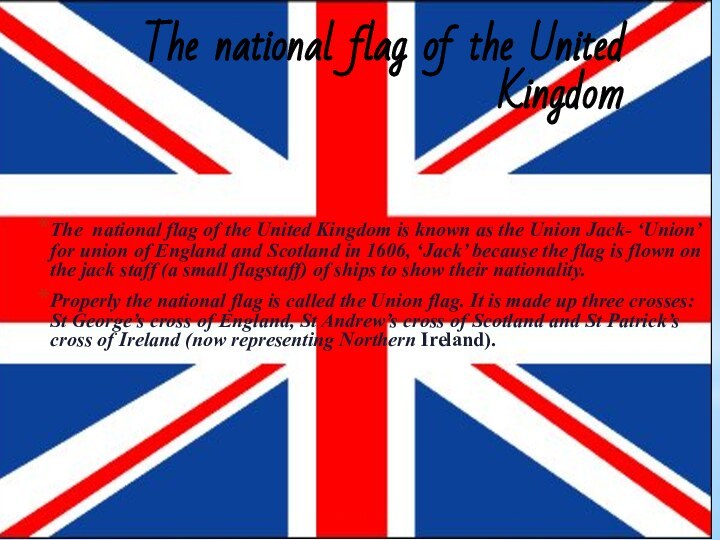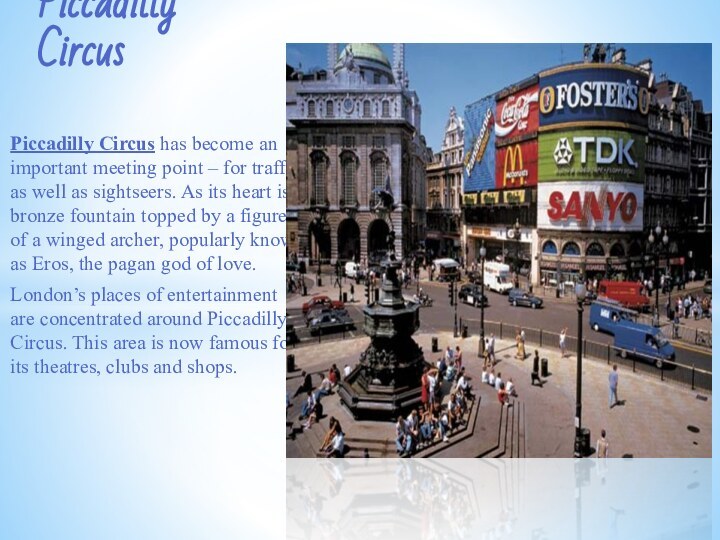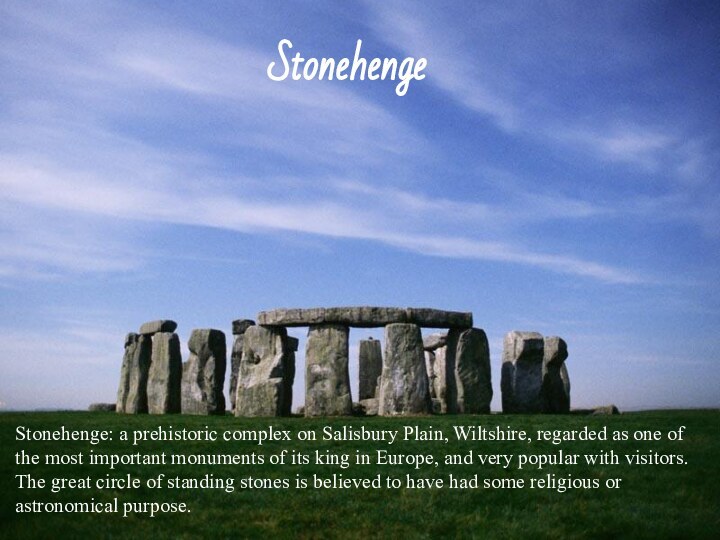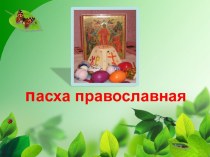Слайд 2
The United Kingdom of Great Britain and Northern
Ireland
The UK- The United Kingdom of Great Britain and
Northern Ireland.
Great Britain- England, Wales.
Land- 244,000sq km
Population- over 57,1 mln (1991)
Capital- London
Largest cities- Birmingham, Liverpool, Manchester, Sheffield, Edinburgh, Glasgow, Cardiff, Belfast.
Languages- English, Welsh, Gaelic
Main PoliticalParties- The Conservative Party, the Labour party
Слайд 3
The national flag of the United Kingdom
The national
flag of the United Kingdom is known as the
Union Jack- ‘Union’ for union of England and Scotland in 1606, ‘Jack’ because the flag is flown on the jack staff (a small flagstaff) of ships to show their nationality.
Properly the national flag is called the Union flag. It is made up three crosses: St George’s cross of England, St Andrew’s cross of Scotland and St Patrick’s cross of Ireland (now representing Northern Ireland).
Слайд 4
England is one of the four nations which
has always played the most powerful part in the
history of the British isles.
1066 is the most famous date in English history. This is the date of the successful Norman invasion of England when Norman leader, known in history as ‘William the Conqueror’, became king of the whole of England.
The Normans introduced the strong system of government and the Kingdom became the most powerful political force in the British Isles. The authority of the British gradually extended to other parts of these islands in the next centuries. It was in this period that Parliament began its gradual evolution into the democratic body is today.
England is often subdivided into three parts: the south, the Midlands and the North.
England
Слайд 5
The landscape is varied. The climate is warmer
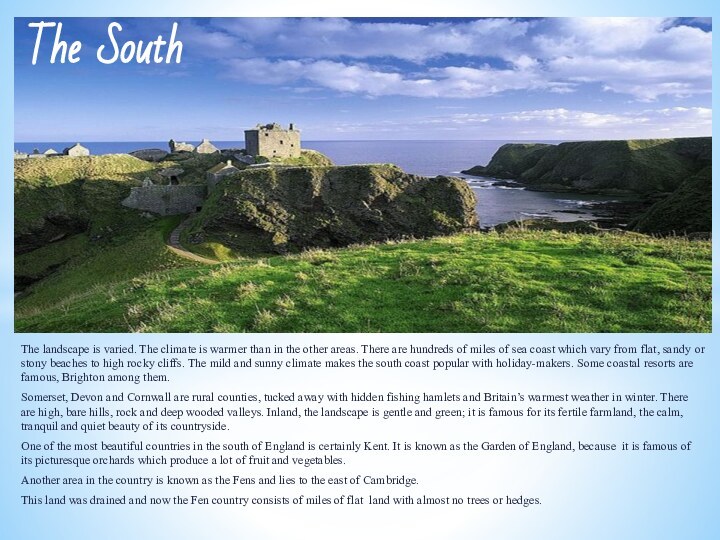
than in the other areas. There are hundreds of
miles of sea coast which vary from flat, sandy or stony beaches to high rocky cliffs. The mild and sunny climate makes the south coast popular with holiday-makers. Some coastal resorts are famous, Brighton among them.
Somerset, Devon and Cornwall are rural counties, tucked away with hidden fishing hamlets and Britain’s warmest weather in winter. There are high, bare hills, rock and deep wooded valleys. Inland, the landscape is gentle and green; it is famous for its fertile farmland, the calm, tranquil and quiet beauty of its countryside.
One of the most beautiful countries in the south of England is certainly Kent. It is known as the Garden of England, because it is famous of its picturesque orchards which produce a lot of fruit and vegetables.
Another area in the country is known as the Fens and lies to the east of Cambridge.
This land was drained and now the Fen country consists of miles of flat land with almost no trees or hedges.
The South
Слайд 6
The midlands
The Midlands Region has much farming land,

but this part of the country is better known
as an industrial area, one of England’s most productive regions.
Birmingham which is often called ‘the Big Heart of England’, is the most important city of the Midlands. It is the second largest city in the UK. Birmingham and the neighboring industrial city of Coventry are famous for engineering, especially car production.
Derby is another engineering centre. Rolls Royce make aero engines and cars there.
The Potteries is another industrial area in the Midlands. It lies around the city of Stoke-on-Trent and produces china, crockery and all kinds of ceramics, some of which are famous worldwide, Wedgwood among them.
The west Midlands, another industrialized area where there are many collieries and steelworks, is known as Black Country because of the black smoke and blackened buildings there.
In contrast, the Midlands region has some beautiful picturesque countryside in the Peak District with its National Park.
Слайд 7
The weather is considerably colder. There is almost
always snow in winter.
This is a region of great
natural beauty although industry of some kind has existed here for hundreds of years. There is a great contrast in the North between the beautiful open, hilly countryside and the industrial towns and mining villages.
In parts of the North- in Yorkshire particularly- there are gentle wooded valleys and green pastures and excellent farming land. West Yorkshire is very good country for sheep-farming land, and it has long been Britain’s most important area for the wool industry.
Coal is one of the few natural resources found in the North of England
Some famous industrial cities in the North are Manchester, Sheffield, Leeds and Newcastle-on-Tyne.
The North
Слайд 8
London
Today, more than 200 years later, Johnson’s words

still ring true. There are few places that offer
such a variety of sights, entertainments, educational and business opportunities, world-famous museums and theatres, and superb shopping.
London draws people from all over the world. Some come on business, some come to study, to work or on holiday. London is naturally a very English city, yet it is the least typical of Britain as it is very cosmopolitan, containing goods, food and entertainment, as well as people, from many countries of the world.
London spreads its influence over much of the southern areas of England; it gives work to millions of people who live not only in the inner-city areas but in surrounding districts. Some people even commute over 100 miles every day to work in London.
There is much in London which fascinates visitors and inspires the affection of Londoners: the splendor of the royal palaces and the Houses of Parliament, the dignity of St. Paul’s Cathedral and many monuments, the fine architecture of numerous historic buildings, and the beautiful parks.
Слайд 9
Trafalgar Square
It's the heart of visitors' London, beating
with tour buses, cameras and flocks of persistent pigeons.
On the square's northern edge is the cash-strapped National Gallery, which has one of the world's most impressive art collections. Famous paintings include Cézanne's The Bathers and van Eyck's Arnolfini Wedding. Entry to the gallery is free, which means if you feel like dropping in and looking at just one or two pictures, you can do so at your leisure without feeling obliged to cover extensive territory.
Слайд 10
Buckingham Palace is the official London residence of
the Queen. When the flag is up it means
that the Queen is in the palace.
Changing of the guards takes place in its courtyard. The palace was built in 1703 by the Duke of Buckingham.
Buckingham Palace
Слайд 11
Piccadilly Circus has become an important meeting point
– for traffic as well as sightseers. As its
heart is a bronze fountain topped by a figure of a winged archer, popularly known as Eros, the pagan god of love.
London’s places of entertainment are concentrated around Piccadilly Circus. This area is now famous for its theatres, clubs and shops.
Piccadilly Circus
Слайд 12
Big Ben
You can see the famous Clock Tower
called Big Ben, which is the symbol of London.
Big Ben is really the bell, which strikes the hour.
Слайд 13
The Tower Bridge
The international symbol of London is
Tower Bridge. It was built between 1886 and 1894
by Sir Horace Jones. Originally steam engines were used to raise the bridge, so that ships could pass underneath. Nowadays, electric motors are used instead. As you cross the bridge you’ll enjoy a wonderful view of the river Thames and London.
Слайд 14
The resting place of the royals, Westminster Abbey
is one of the most visited churches in the
Christian world. It's a beautiful building, full of morose tombs and monuments, with an acoustic field that will send shivers down your spine when the choirboys clear their throats. The roll call of the dead and honoured is guaranteed to humble the greatest egoist, despite the weighty and ornate memorabilia. In September 1997, millions of people round the world saw the inside of the Abbey when TV crews covered Princess Di's funeral service. Since then the number of visitors has increased by 300%, and the visit is now more restricted, with some areas cordoned off.
Westminster Abbey
Слайд 15
Half the world saw the inside of St
Paul's Cathedral when Charles and Di tied the knot
here in 1981. The venerable building was constructed by Christopher Wren between 1675 and 1710, but it stands on the site of two previous cathedrals dating back to 604. Its famous dome, the biggest in the world after St Peter's in Rome, no longer dominates London as it did for centuries, but it's still quite a sight when viewed from the river. Visitors should talk low and sweetly near the whispering gallery, which reputedly carries words spoken close to its walls to the other side of the dome.
St. Paul’s Cathedral
Слайд 16
The British Museum
The most trafficked attraction in Bloomsbury,
and in the entirety of London, is without a
doubt the British Museum. It is the oldest, most august museum in the world, and has recently received a well-earned rejig with Norman Foster's glass-roofed Great Court. The museum is so big and so full of 'stuff' collected (read: stolen?) by Victorian travellers and explorers that visitors often make the mistake of overdosing on the antiquities. See as much as you want to see, not as much as you believe you should. Highlights include the weird Assyrian treasures and Egyptian mummies; the exquisite pre-Christian Portland Vase and the 2000-year-old corpse found in a Cheshire bog. With the removal of the British Library to St Pancras, the Reading Room is now open to the public, sadly making Reader's tickets a thing of the past.
Слайд 17
The Tower of London
The Tower of London is
also the symbol of London. It was built in
the 11th century by William the Conqueror. It served as a fortress, a palace, then a prison, royal treasury. Now there is a museum there. It is one of the most visited spots in Britain.
Слайд 18
Humongous Hyde Park used to be a royal
hunting ground, was once a venue for duels, executions
and horse racing, and even became a giant potato field during WWII. It is now a place of fresh air, spring colour, lazy sunbathers and boaters on the Serpentine. Features of the park include sculptures by Jacob Epstein and Henry Moore and the Serpentine Gallery, which holds temporary exhibitions of contemporary art.
Hyde Park
Слайд 19
Stonehenge
Stonehenge: a prehistoric complex on Salisbury Plain, Wiltshire,
regarded as one of the most important monuments of
its king in Europe, and very popular with visitors. The great circle of standing stones is believed to have had some religious or astronomical purpose.
Слайд 20
Sports and Games
The British have a reputation

for being mad about sports. In fact they enjoy
watching sports rather than playing them.
Football. The British invented the rules many of the sports and games now played all over the world. The game of football or soccer was first played in Britain and spread to other countries. There are plenty of amateur soccer players in Britain who enjoy playing the game on Saturday or Sunday afternoons. Amateur clubs can complete against the professionals in the English Football Association Cup Competition.
Cricket is sometimes called the English national game, having been played as early as the 1550. It is usually played by men and boys though there are team or women and girls as well. Players traditionally wear white clothes. There are a lot of amateur cricket teams. A typical amateur cricket match takes places on a village green, an open grassy space in the centre of the village. It is played between two teams: the “home team” and “the visitors”, who come from another village in a neighborhood.
Sailing. About three million British people go sailing in small boats every year. The number of small-boat owners has increased 1000% n 10 years. It is a very natural development. If you live in Britain you are never more than 100 miles from the sea and there are plenty of lakes and rivers to sail on, too. Sailing in motor yachts, windsurfers, powerboats and cruisers takes place in clubs throughout Britain.
Слайд 21
Home Sweet Home
As the famous English saying goes

‘an Englishman,s home is his castle’; there are few
things more important to a British person than having his or her own home. They are dedicated to them, they give them a lot of time and effort, looking after their homes with much love, care and enthusiasm. More than half of British families own their homes. Others live in council accommodation and some people rent from private owners.
There are all sorts of different houses in Britain: terraced, semi – detached and detached houses, a block of flats and even houseboats.
A semi-detached house is joined to the house next door by a shared wall. A house of this kind is less expensive than a detached house, but still offers a good standard of privacy and comfort. It usually has a small garden at the from and a larger garden at the back.
A detached house is the most expensive type of home . It stands on its own land and is not attached to another building. Such houses have privacy from neighbours, and they are ideal for keen gardeners who can devote plenty of time to work on their garden.
A terraced house is usually two- or three-stores high. It is on of a continuous row of similar houses, joined together by their side walls. Many rows of terraced houses were originally built for workers in nearby factories or coalmines. A terraced house usually costs less than a semi-detached or detached house of similar size. There are miles of terraced houses in most towns. Over a quarter of British families live in them.
Apartment blocks are high-rise blocks of flats which provide accommodation for a lot of city dwellers. But these buildings are not very popular. About 20% of the population live in flats. There are more flats in cities then in rural areas. Most people in Britain traditionally like to live in houses.
Bungalows are one-storey houses which are particularly popular with older people.
Слайд 22
British food
Roast Beef and Yorkshire Pudding is a

traditional English family lunch on Sunday. The main ingredient
is hot roast beef with vegetables and gravy. Yorkshire pudding is traditionally served with roast beef. It is a light savory dish baked from a batter of flour, eggs and milk. In Yorkshire it is often served as a ‘starter’, with gravy.
Apple pie is a favourite sweet in England. There are lots of ways of cooking apples. The English bake them, stew them, put them in jam, and make sauce with them. Sometimes the cover them with pastry, to make an apple pie- which is delicious with cream. And sometimes they cover them with toffee and put them on stick, to make toffee apples.
English Breakfast. In many countries breakfast is a snack rather than a meal, but the traditional English breakfast is a full meal. Some people start with a bowl of cereal and milk. In Scotland, particularly, they eat porridge (cooked oatmeal); it is a traditional warm beginning to the day. Next, there is always something cooked- usually fried. Bacon and eggs, sausages, tomatoes, mushrooms, even potatoes and bread are fried and eaten at breakfast-time. Yorkshire ham is also a breakfast specialty. Finally, there is toast and marmalade, and tea or coffee.


